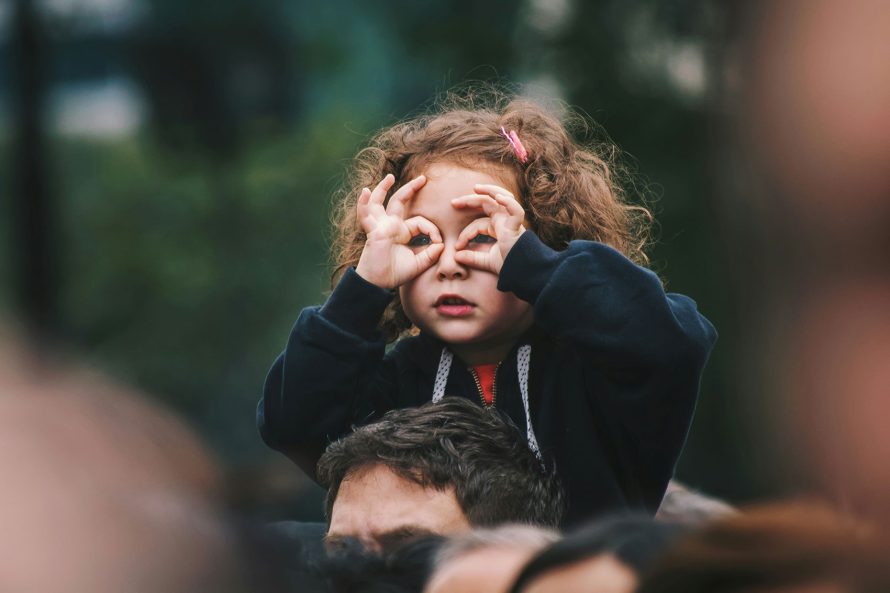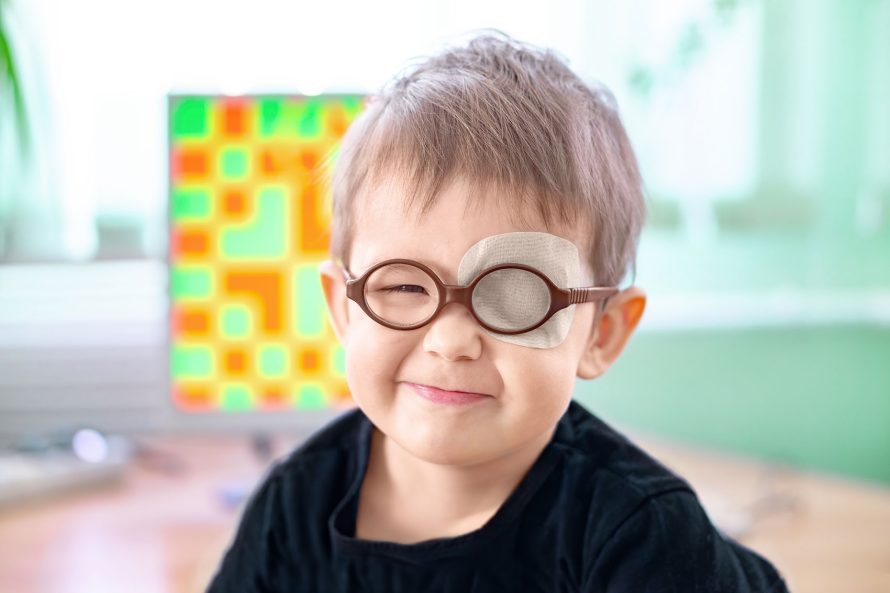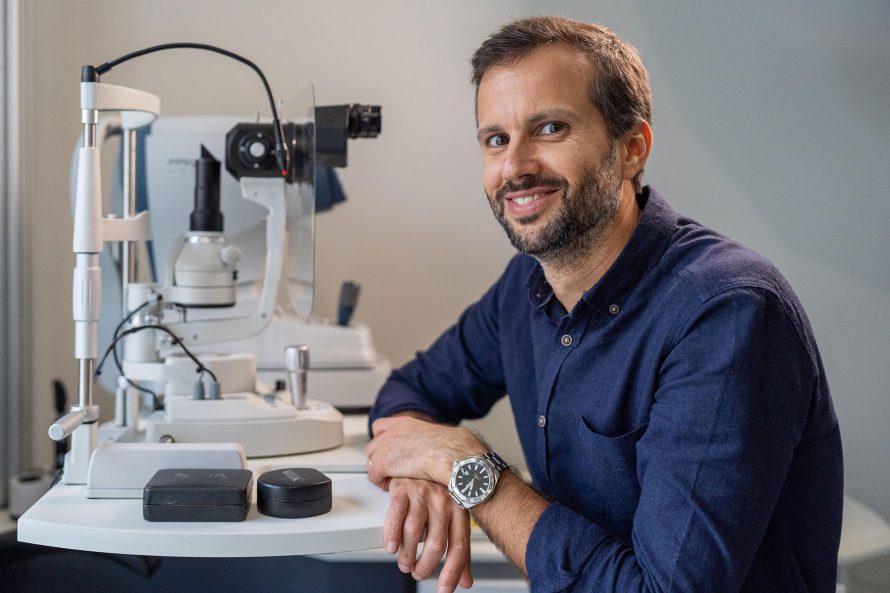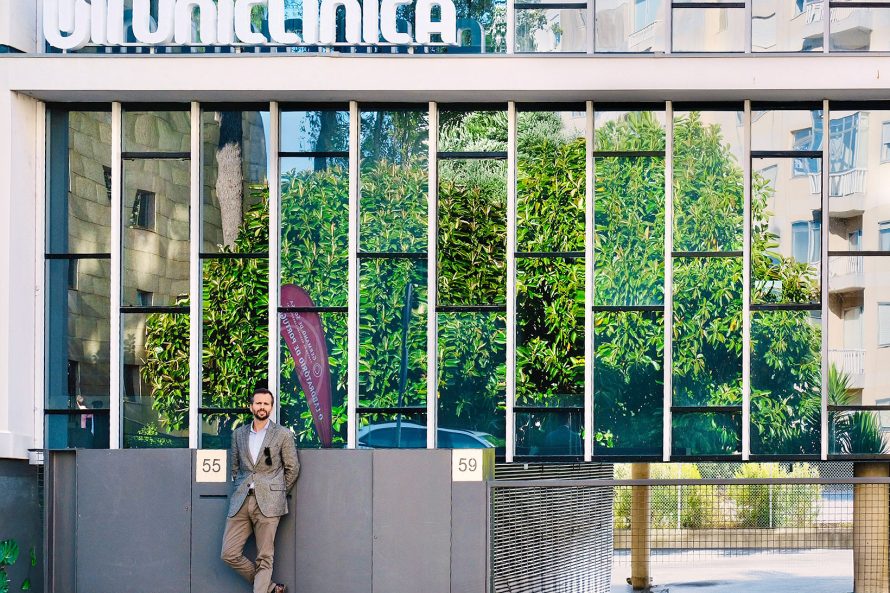Amblyopia (“Lazy Eye”) Treatment and Alternatives to the Eye Patch
What is amblyopia, and what are its leading causes?
Amblyopia, commonly known as “lazy eye”, is a condition in which one eye develops reduced visual acuity because the brain starts to ignore the images from that eye. In practice, even with updated glasses, the child cannot see well in one eye due to a failure in normal visual development during early childhood.
The most common causes include:
Strabismus (a constant eye misalignment that leads the brain to suppress vision from one eye), anisometropia (a significant difference in prescription between the two eyes, making one eye focus more poorly), and visual deprivation in one eye (e.g., congenital cataract, ptosis, or any opacity obstructing vision).
Any factor that interferes with vision in one eye during the early years (the critical period of visual development, up to age 6–7) can trigger amblyopia. Amblyopia is relatively common, affecting about 2–3% of children, and is one of the leading causes of preventable visual loss in childhood.
The importance of early diagnosis
It is essential to detect amblyopia as early as possible — ideally during preschool — since treatment is more effective while the child’s visual system is still developing. Often, neither the child nor the parents notice the issue (since the other eye sees normally), and it is only detected during routine screenings at the paediatrician or school. Identifying amblyopia around age 3–4 allows early intervention, maximising the potential for visual recovery. Vision screening at this age is highly recommended, as untreated amblyopia can result in permanent visual loss in the affected eye.
Conventional treatment: Glasses and Eye Patching (Occlusion)
The traditional treatment of amblyopia always begins with correct optical correction — wearing glasses to treat any refractive errors (such as myopia, hyperopia, or astigmatism) and provide the best possible image to both eyes.
Next, the classical method is occlusion of the stronger eye using an eye patch, forcing the use of the amblyopic eye. This monocular approach “forces “he brain to pay attention to the weaker eye, and in most cases, it improves visual acuity. In some selected cases, partial penalisation is used, such as atropine drops in the dominant eye (which temporarily blur vision) as an alternative or complement to the patch.
Advantages and limitations of eye patching: The eye patch has the advantage of being used for decades, with proven efficacy and low cost. However, it presents several challenges. Many children resist wearing the patch for the prescribed duration — adherence is a key concern. The patch can cause physical and emotional discomfort for children, parents, and guardians: younger children may feel frustrated by the blocked vision and may feel different or embarrassed. Interestingly, collaboration at school is often better than at home — group encouragement and trust in educators usually help small children to comply more easily.
Even when patching improves the vision in the lazy eye, there are significant limitations: some children regress after finishing treatment, and may still lack binocular vision (stereopsis). In other words, the patch improves one eye, but does not teach the eyes to work together — many children continue to suppress the amblyopic eye and fail to develop depth perception, even after successful occlusion. Due to these psychosocial and functional limitations, patching may often fail because of inconsistent use.
New Digital Visual Therapies (Binocular Stimulation)
Given the inherently binocular nature of amblyopia — a problem of competition between both eyes in the brain — alternative therapies have been developed to stimulate both eyes together, instead of blocking one.
These use dichoptic stimulation, presenting different images or stimuli to each eye in a controlled way. In simple terms, the input to the stronger eye is reduced or modified (e.g., lowering contrast or blurring part of the image), while a clear picture is shown to the weaker eye, forcing the brain to combine both images to complete the scene. This stimulates the amblyopic eye without turning off the other, promoting binocular cooperation.
In recent years, digital therapies based on this principle — including devices and interactive software — have emerged, and some have even been approved by regulatory authorities such as the FDA in the US. Two of the main available options are described below:
CureSight: Binocular Therapy with Eye-Tracking and Video (Read more)
CureSight is an innovative home-based amblyopia therapy, recently approved by the FDA and CE-marked in Europe. It uses a specialised tablet with eye-tracking and real-time image processing algorithms. The child wears dedicated glasses and watches videos or cartoons of their choice; simultaneously, the device detects where the child is looking and applies selective blurring to the image seen by the stronger eye, while keeping the image clear in the amblyopic eye.
This way, the central visual details are only visible through the “lazy eye”, encouraging the brain to use it, while preserving binocular vision. In practice, children use the device at home for around 1 hour a day, under parental supervision, typically for 3 to 5 months.
Effectiveness and adherence. Large-scale clinical studies have shown that CureSight achieves results comparable to or superior to eye patching in children aged 4 to 8. In a randomised multicentre trial with ~150 children, after 16 weeks of treatment, visual improvement in the amblyopic eye was statistically equivalent in the CureSight group and the patching group (proving non-inferiority). Moreover, children who used CureSight consistently improved more than those who patched.
Importantly, CureSight also provided binocular benefits: children improved their stereopsis (depth perception) and maintained these gains after one year — something not always seen with patching alone.
Another major strength is adherence: in the cited study, ~94% of prescribed therapy time was completed in the CureSight group versus ~84% in the patching group. This suggests that children, parents, and guardians are more likely to engage with a pleasant, screen-based therapy than with prolonged patching.
Parental satisfaction levels were high, and no serious adverse effects were reported, confirming the technology’s safety. CureSight is now available in Portugal through specialised centres under ophthalmologist supervision as a complementary amblyopia treatment.
AmblyoPlay: Interactive Games and Visual Exercises at Home (see more)
Another digital option is AmblyoPlay, which offers gamified vision therapy via interactive games and exercises. Unlike CureSight (a dedicated device), AmblyoPlay runs on regular tablets or computers, paired with red/green filtered glasses.
The child plays therapeutic games designed to train visual skills and stimulate the weaker eye, typically for 30 minutes daily (e.g., two 15-minute sessions). The software automatically adjusts difficulty to the user’s performance, and a learning algorithm personalises the programme based on progress. The dichoptic glasses ensure that different elements of the image are presented to each eye, encouraging the use of the amblyopic eye with both eyes open.
Ease of use and motivation. AmblyoPlay’s advantage is accessibility — it works with standard devices and requires only the app and filter glasses. It’s relatively easy to implement at home, even in areas without access to advanced equipment. The playful design and reward system help maintain the child’s motivation over time.
However, AmblyoPlay is generally used to complement traditional treatment, not as a complete substitute. It is often employed between patching sessions or after an initial occlusion phase to improve binocular skills more engagingly.
Comparing Digital Alternatives to Traditional Patching
Each approach has its advantages and limitations. The eye patch remains essential, especially for young children with severe amblyopia. Patching is simple, low-cost, and effective in improving visual acuity. However, as noted, it presents challenges in adherence and social-emotional impact, and does not train binocular cooperation. Many children treated with patching alone fail to develop whole-depth perception (stereopsis).
Digital binocular therapies address these gaps. Their key advantage is training the eyes to work together. Evidence shows that they can achieve similar visual acuity improvements in mild to moderate cases with the added benefit of enhanced binocular function. Binocular therapy may also reduce neural suppression more permanently, whereas patching alone sometimes leads to relapse after stopping treatment.
Still, these technologies are not a replacement in all cases. Surgery or patching may be needed before binocular therapy is effective for amblyopia caused by large-angle strabismus, where no fusion is possible. Similarly, digital therapy may be impractical in very young children (<3 years), and patching or atropine remain essential.
Digital therapies also require technological resources (a device, software access, sometimes subscriptions) and professional follow-up. Not all families can access or maintain these tools, and children with attention difficulties may struggle even with gamified formats. Professional guidance is crucial — these therapies should never be started without medical supervision.
These innovations offer a more friendly and holistic path to amblyopia treatment, often best used with traditional methods. For instance, reducing patching hours and supplementing with binocular exercises may boost outcomes. Every child is unique, and the paediatric ophthalmologist will assess the case to define the best plan — glasses, patch, atropine, and/or digital therapy.
Practical Tips for Parents and Caregivers
Schedule early vision screening: Don’t wait for your child to complain. Many children don’t notice the problem. Routine eye checks by age 2–3 are key.
Follow the individualised plan: Whether it’s classes, patching, drops, or digital therapy, consistency is essential. Set daily routines and use reminders.
Discuss options with your doctor: Ask about alternatives. Today, we have binocular digital therapies, orthoptic exercises, and more. The right solution depends on the case.
Keep your child motivated: Treatment can last months or years. Make it fun! Use decorated patches, reward calendars, and engaging activities during therapy. If using digital games, play together and celebrate progress.
Attend follow-up visits: Regular check-ups help track progress and adjust the plan. Don’t stop too early — amblyopia can return if treatment ends prematurely.
Conclusion: Amblyopia treatment requires early detection, personalisation, and persistence. Children can improve their vision more comfortably and effectively with today’s innovative tools. With the proper support and motivation, most children with a “lazy eye “can regain strong, functional vision — an investment worth it for their visual future.






